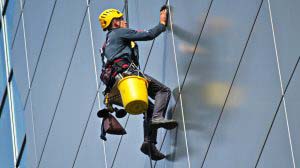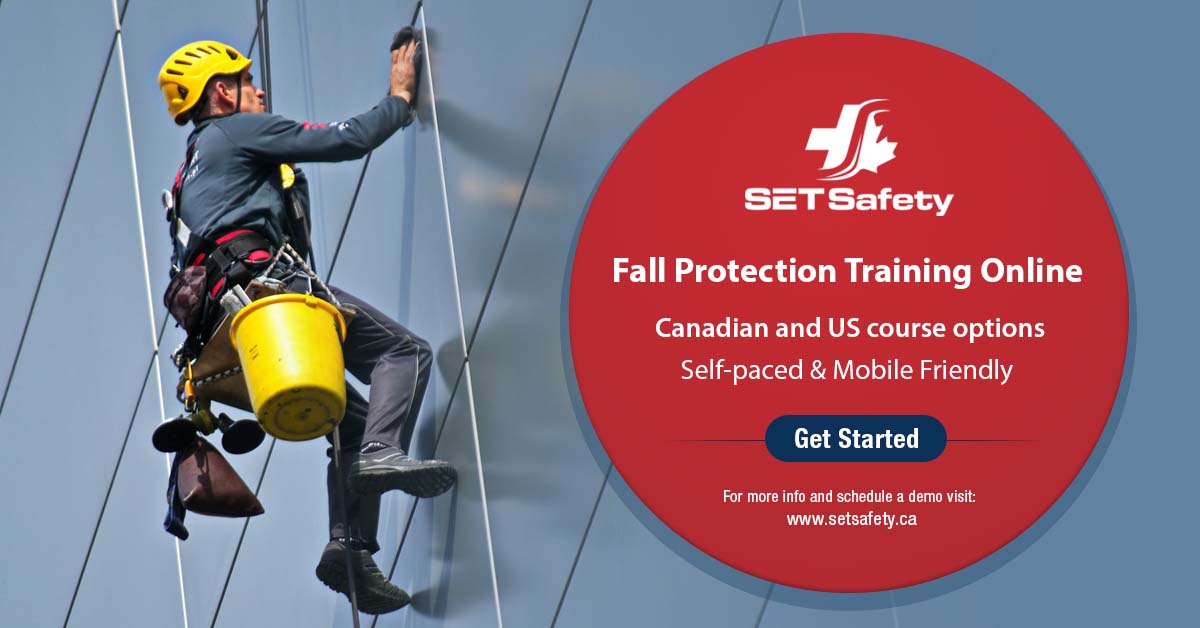Top 4 Fall Protection System to Protect the Employees

Falls are among the most common causes of serious, work-related injuries and deaths. Fall protection is the use of controls that are designed to protect the employees from falling when working at heights. A fall protection plan is a safety plan laid for the sake of employees who work at an elevated area generally above five to six feet.
What are the types of fall protection?
The ways through which falls can be stopped/protected are commonly categorized into four types.
1. Fall Arrest:
This is a form of fall protection which safely stops a person from falling. Fall Arrest systems are necessary in places where workers work from elevated positions. The fall arrest system comes to rescue only when the fall occurs.
2. Positioning:
This system helps to hold workers in place and keep them intact whilst the employee works with both hands. Here the employees could be on a ladder, working. This system does not support fall-arrest mechanisms whereas it prevents fall from happening.
3. Retrieval:
A Retrieval (AKA) Rescue plan is a system that comes into picture after a fall happens. This would mainly cover the post-fall scenario where the system concentrates on how to rescue the workers that has experienced a fall and this would be a part of the Fall Management Plan.
4. Suspension:
This system supports workers while leaving their hands free. Suspension comes into picture for those workers who are involved in painting, window washing etc.
What can be done to reduce falls?
Employers must create the work environment in such a safe way that it prevents employees from falling off overhead platforms, elevated work stations or into holes found in floor/walls etc.
Some of the measures that can be taken to prevent falls are as follows.
- Using proper railing wherever necessary.
- Guarding every floor hole in which a worker can accidentally walk (with railing/floor cover)
- Fall Containment System (Usage of safety nets, hand rails).
- Fall Arrest System (i.e., a system that will stop a worker’s fall before the worker hits the surface below)
- Fall Restraint Systems (i.e., a system to prevent a worker from falling from a work position, or from travelling to an unguarded edge from which the worker could fall)
- Using the right equipment for the right work
- Providing guard rails and toe boards
- Warning barriers/control zones
Fall Protection Plan and Training
The following should be taken into account while structuring a fall protection plan.
- It should outline the policy and procedures involved in assembling, maintaining, inspecting, using, and dismantling equipment like ladders and scaffolds
- Correct procedures to be mentioned for handling the tools and materials at heights
- The plan should be specific and unique to the job site
- Proper procedure to be mentioned for assembly, inspection and maintenance of fall protection systems that are in use
- A pre-assessment to be done and all the fall hazard areas to be assessed
- Employees must be educated about the risks, and the fall-risk areas,They are also to be educated about the protection plans
- Employees are to be trained on how to prevent falls, how to help themselves & others and how to conduct safety inspections
Everyone in the workplace has a role to play in preventing fall-related incidents. Beyond the employee themself, the responsibility in prevention and planning is extended to include project engineers, supervisors, safety managers, worksite contractors and fellow employees.
Fall Protection – Safety Consulting and Training Solutions
- What are the types of fall protection?
- What can be done to reduce falls?
- Fall Protection Plan and Training
Fall Protection Training & Certification
- Fall Protection Train the Trainer Certification (CAN)
- Fall Protection (OSHA)
- Fall Protection for Construction
- Personal Fall Arrest Systems
- Personal Protective Equipment for Employees (PPE)
- Fall Protection for General Industry
- Maritime Fall Protection (OSHA)
References:
- https://simplifiedsafety.com/blog/what-are-the-different-types-of-fall-protection-for-the-construction-industry/
- https://en.wikipedia.org/wiki/Fall_protection
- https://fallprotectionxs.com/who-is-responsible-for-fall-protection/

